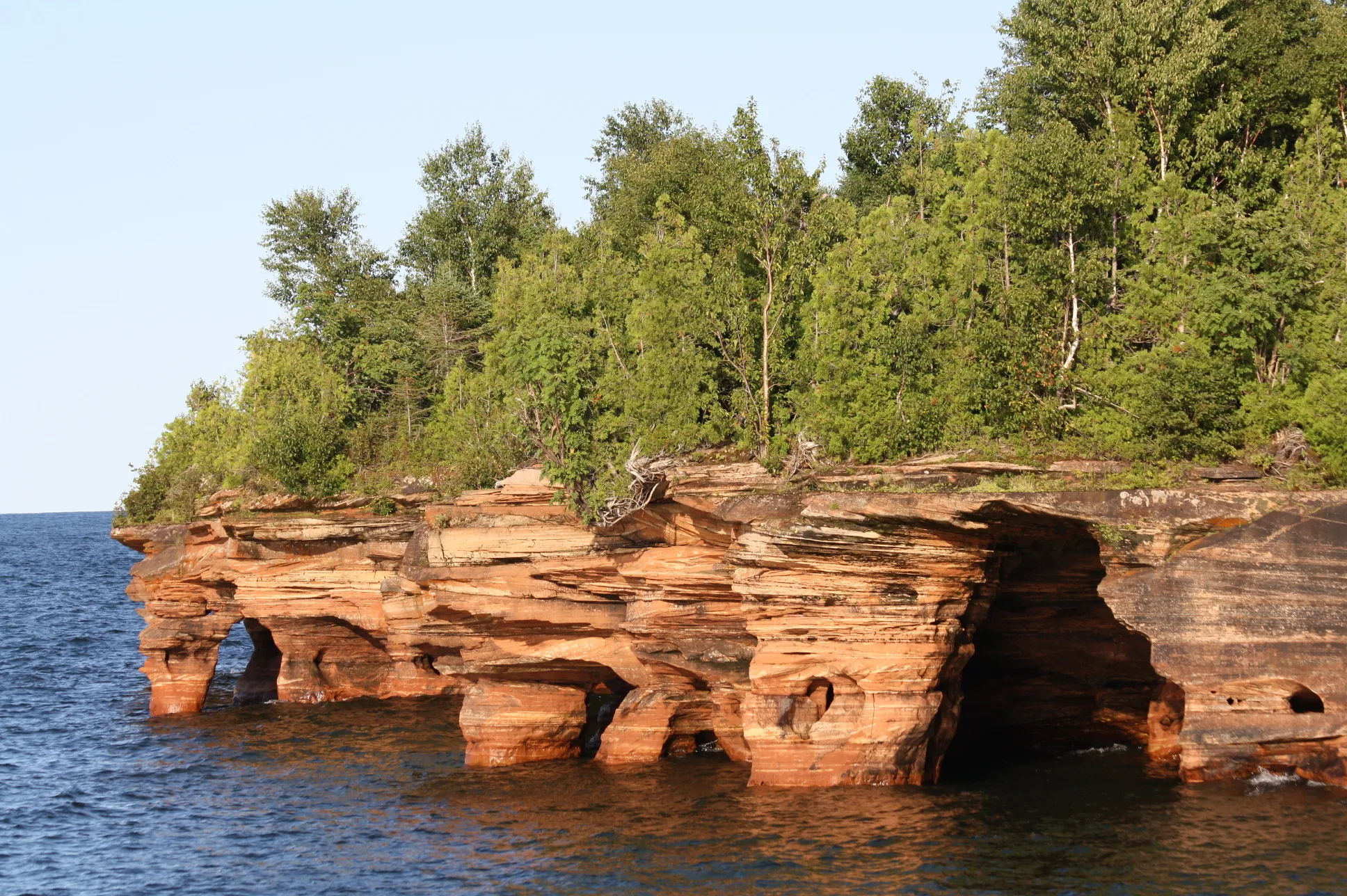Devils Island is one of the twenty-two Apostle Islands of northern Wisconsin, and was also known as the Isle of Louisiana (Henry R. Schoolcraft's 1820 map), Barney and Lamborne's Isles (Asafa Whittlesey's 1871 Map), Brownstone Island, and Rabbit Island.
Devils Island is located in the west of Lake Superior near the Bayfield Peninsula, centered at approximately 47 ° 04'16.50 "N, 90 ° 43'36.33" W, and has a maximum elevation of 652 feet above sea level. The island rises just 50 feet above Lake Superior's official elevation of 602 feet.
 |
| Devils Island Wisconsin |
There are no people on the island other than the Summer Park Service volunteers. It is administered by the National Park Service as part of Apostle Islands National Lake.
The politician and author Samuel Fyfield wrote in 1899 that "the Indians in the early days declared it the home of the Matchmanito, the" evil spirit "that Kitchee-Manitou, the" great spirit "had imprisoned here. Hence its name - Devils Island”. Governor Fyfield did not specify the source of information for this claim, and some contemporary indigenous scholars question the accuracy of this explanation.
When the surf is strong on the lake, waves rumble and thunder in the island's vast sea caves. The rumble can be heard even far from the coastline. Locals claim that the Ojibwe (Chippewa) interpreted this noise as the sound of evil spirits.
The island is perhaps the most visited because of the impressive rock formations and sea caves that surround its northern shore. It is popular with kayakers who love to wander in and out of caves on quiet days. The caves were built from billions of years old sandstone that shines through the island's surface. Red and gold sandstone was deposited over the area by wandering streams from the western hills. The undulating climate over about a million years created a sandstone crust about 1,800 feet thick. They are colorfully layered. Like ripples on the sandy bottom of a lake or stream caused by wind, waves, or currents, the ripples on these rocks are caused by gentle waves that passed 1 billion years ago.
 |
| Devils Island Wisconsin |
The Light of Devils Island, located in the northern part of the island, is manned by a volunteer ranger during the busiest summer months. Accompanied by a volunteer, visitors can climb the tower and enter the original keeper's cabin, built in 1894. The lighthouse contains a 3rd order Fresnel lens, the only lighthouse on the Apostolic Islands with an original lens. Upon closer inspection, the lens reveals multiple cracks and damage that occurred when the US Coast Guard removed the lens in 1989. After local protests and lawsuits, the Park Service was able to return the lens to the lighthouse in 1992.
Visitors are free to walk around the grounds and enjoy the many trails found on the island. Starting at the light station, they include short trails to the east, embarkation, loop trails to the west, embarkation, and longer trails down the center of the island to the boathouses and docks on the south side.
To the east is the old turbine room, which was used to transport supplies from the dock. The building, believed to have been completed in 1901, is the only one built from the sandstone quarried on the island. The bulldozer that paved these trails can be found along the trail to the western side. It is believed that the rare heather (grass) found on Devils Island was transferred to the island in the footsteps of an army bulldozer that was once used in Greenland.
The northern tip of Devils Island is the northernmost point of Wisconsin.
Coordinates: 47 ° 04′16.5 ″ N 90 ° 43′36.33 ″ W / 47.071250 ° N 90.7267583 ° W / 47.071250; -90.7267583